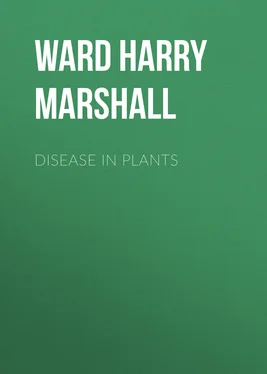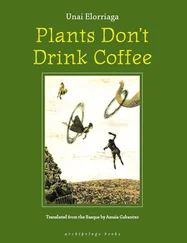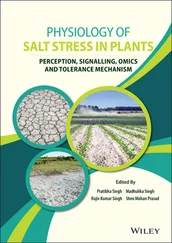Harry Ward - Disease in Plants
Здесь есть возможность читать онлайн «Harry Ward - Disease in Plants» — ознакомительный отрывок электронной книги совершенно бесплатно, а после прочтения отрывка купить полную версию. В некоторых случаях можно слушать аудио, скачать через торрент в формате fb2 и присутствует краткое содержание. Жанр: foreign_prose, Биология, Биология, foreign_edu, foreign_antique, на английском языке. Описание произведения, (предисловие) а так же отзывы посетителей доступны на портале библиотеки ЛибКат.
- Название:Disease in Plants
- Автор:
- Жанр:
- Год:неизвестен
- ISBN:нет данных
- Рейтинг книги:5 / 5. Голосов: 1
-
Избранное:Добавить в избранное
- Отзывы:
-
Ваша оценка:
- 100
- 1
- 2
- 3
- 4
- 5
Disease in Plants: краткое содержание, описание и аннотация
Предлагаем к чтению аннотацию, описание, краткое содержание или предисловие (зависит от того, что написал сам автор книги «Disease in Plants»). Если вы не нашли необходимую информацию о книге — напишите в комментариях, мы постараемся отыскать её.
Disease in Plants — читать онлайн ознакомительный отрывок
Ниже представлен текст книги, разбитый по страницам. Система сохранения места последней прочитанной страницы, позволяет с удобством читать онлайн бесплатно книгу «Disease in Plants», без необходимости каждый раз заново искать на чём Вы остановились. Поставьте закладку, и сможете в любой момент перейти на страницу, на которой закончили чтение.
Интервал:
Закладка:
The probability is increasing that the protoplasmic machinery is the really effective mechanism in the process, and we may figure this machinery as so holding or presenting the molecules of carbon-dioxide and water to the impact of the light-vibrations, that the latter are enabled to undo the molecular structure; the atomic combinations thereby liberated may then be supposed to form a body like formic-aldehyde, which by polymerisation becomes a carbohydrate of the nature of a sugar such as glucose, which the protoplasm then builds up into its substance and subsequently deposits as starch, and stores temporarily in the form of grains or as amorphous material.
This is partly hypothetical, and is largely due to the careful deductions of the chemists, but there are very many facts now to hand which bear out its probability, especially the recent advances in our knowledge of the sugars, and the experimental feeding of leaves and plants deprived of starch with such substances as dextrose, levulose, maltose, and other sugars, as well as glycerine and other bodies which should be convertible into, or yield them, if the theory is true. In this last connection, the careful and extensive experiments of Acton, A. Meyer, Boehm, and Laurent should be mentioned. It would be interesting to enlarge upon Engelmann's beautiful physiological experiments in connection with this subject of absorption of solar energy, where the maximum accumulation of oxygen-loving bacteria at those parts of a green alga which lie in the red-orange of the spectrum, are used as indicators of the maximum oxygen evolution (and therefore of the maximum carbon-dioxide assimilation), but space will not admit of this. For a similar reason I must also pass over the same observer's experiments with plants which assimilate in protoplasm behind a red instead of a green substance, and which absorb chiefly other rays between the yellow and blue, with the remark that they also seem to imply that it is the protoplasmic machinery which turns the energy on to the carbon-dioxide molecule, the coloured screen being secondary in the matter. Recent experiments which show that green plants will not assimilate carbon-dioxide in a light which has passed through a solution of chlorophyll—and therefore left its red rays behind; nor behind a screen of iodine dissolved in carbon-dioxide—which lets no visible rays between the red and blue pass—should be noticed, as showing the importance of the chlorophyll and the special rays referred to, however; and I ought at least to mention Timiriazeff's beautiful proof, published in 1890, that if, on the leaf of a plant left in the dark long enough to render it free of starch, a bright solar spectrum is steadily projected for 3-6 hours, the chlorophyll then removed by alcohol and the decolorised leaf placed in iodine, the image of the spectrum is reproduced by the different intensities of the starch bands, blue with iodine, in the different parts. Here, again, the maximum coloration coincides with the maximum absorption in and near the red.
Microscopic observations and photo-chemical experiments alike convince us that the chlorophyll-corpuscle is itself a complex piece of protoplasmic machinery, working for and with the rest of the plant, and there can be little question as to the greater accuracy of our reasoning on the whole question I am discussing, since Meyer, Schimper, Pringsheim, and others have established the importance of its structural peculiarities.
I must now pass on to consider another aspect of the question of carbon-assimilation.
Notes to Chapter III
In addition to the references in the last chapter, the reader may be referred to Sachs' Lectures , XXV., and Pfeffer's Physiology , pp. 329-356, where the voluminous literature is given.
CHAPTER IV.
METABOLISM
Quantities of starch formed, and their significance for the plant. The absorption of energy—the conversion of energy in the plant. The plant is a complex machine for concentrating and storing energy and material from without.
Sachs measured the increase in dry weight (due to the carbohydrates formed in the chlorophyll-corpuscles) per square meter of leaf-surface, exposed for a definite period, by drying rapidly at 100° C. equal areas of the leaves concerned, and comparing the weights.
Of course the results are not to be pushed too far, in view of the fact that some of the starch is continually passing away to be utilised, and of the difficulties of comparing the weather, the intensity of light, currents of air, hygroscopic conditions of atmosphere, and other variable factors which influence the matter. For instance, the stomata open and close to different extents according to the conditions of light and moisture, and this affects the whole mechanism of transpiration especially, and therefore the supplies of water and mineral salts. Nevertheless, some interesting and valuable results have been obtained in connection with this important subject.
It was found, for instance, that the foliage of a sun-flower or of a vegetable-marrow may be forming starch at a rate of considerably over a gram per hour in every square meter of leaf-surface exposed on a fine day; while in particularly clear and warm sunny weather Sachs obtained as much as 24 to 25 grams per square meter per diem.
When one reflects that 200 square meters is not an extravagant estimate for the area of leaf-surface exposed on a tree, for a period which even in our latitudes may be considerably over 100 days of, say, ten hours' light, we need no longer wonder at the rapidity with which wood is produced in the stems, and similar estimates (which I have purposely kept lower than the estimates for continental and tropical climates) may suffice to show how quickly potatoes or the ears of corn, etc., may fill up with the starch or other carbohydrates which render them valuable as crops. We want more measurements in these connections, moreover, for there are several ways in which they are of scientific value and practical importance.
It is evident from what has been said that every grain of starch formed represents so much energy, packed away for the moment in the storehouses of the plant; and we know that—quite apart, however, from intermediate transformations of the energy thus stored—this energy reappears in the kinetic state eventually, when the starch is burned off, in presence of oxygen, and transformed into carbon-dioxide and water. It matters not how quickly or how gradually this combustion occurs, or whether it is accomplished by burning in a fire, or by slow and complex stages in respiration or metabolism: the point is that the unit of weight of starch yields so many units of heat when its structure tumbles down to the original components, carbon-dioxide and water.
Clearly, if we know how many units of heat are yielded by the combustion of one gram of starch, we can obtain an estimate of the amount of energy, measured in terms of heat, which the foliage gains and stores up—an estimate which will approach the truth in proportion as our estimate of the total assimilative activity is correct.
A word of warning is necessary here, however, for those best acquainted with physiology recognise that however useful such calculations as the above may be, and undoubtedly are, to give a general idea of the fact that the energy represented is large, it would be a mistake to suppose that such estimates give even an approximate measure of the energy of potential which may be got from the carbohydrate, and still less of the amount of work that may be got from its employment, according to the way it is employed or presented in the plant. To take a single instance only. If the carbohydrate is rapidly burned off to carbon-dioxide and water, very little is got out of it in the way of work—most, if not all, of the energy set free escapes as heat: whereas if the carbohydrate is slowly and gradually oxydised, passing through various stages and giving rise to powerfully osmotic bodies in the process, or if it is built up into protoplasm, or into the structure of a cell-wall, relatively enormous quantities of work may be got out of its surface-energy, and heat may be absorbed. Whence it follows that we cannot measure the power for physiological work of a body by merely obtaining its heat of combustion, any more than we can infer its significance in metabolism from its chemical properties.
Читать дальшеИнтервал:
Закладка:
Похожие книги на «Disease in Plants»
Представляем Вашему вниманию похожие книги на «Disease in Plants» списком для выбора. Мы отобрали схожую по названию и смыслу литературу в надежде предоставить читателям больше вариантов отыскать новые, интересные, ещё непрочитанные произведения.
Обсуждение, отзывы о книге «Disease in Plants» и просто собственные мнения читателей. Оставьте ваши комментарии, напишите, что Вы думаете о произведении, его смысле или главных героях. Укажите что конкретно понравилось, а что нет, и почему Вы так считаете.












